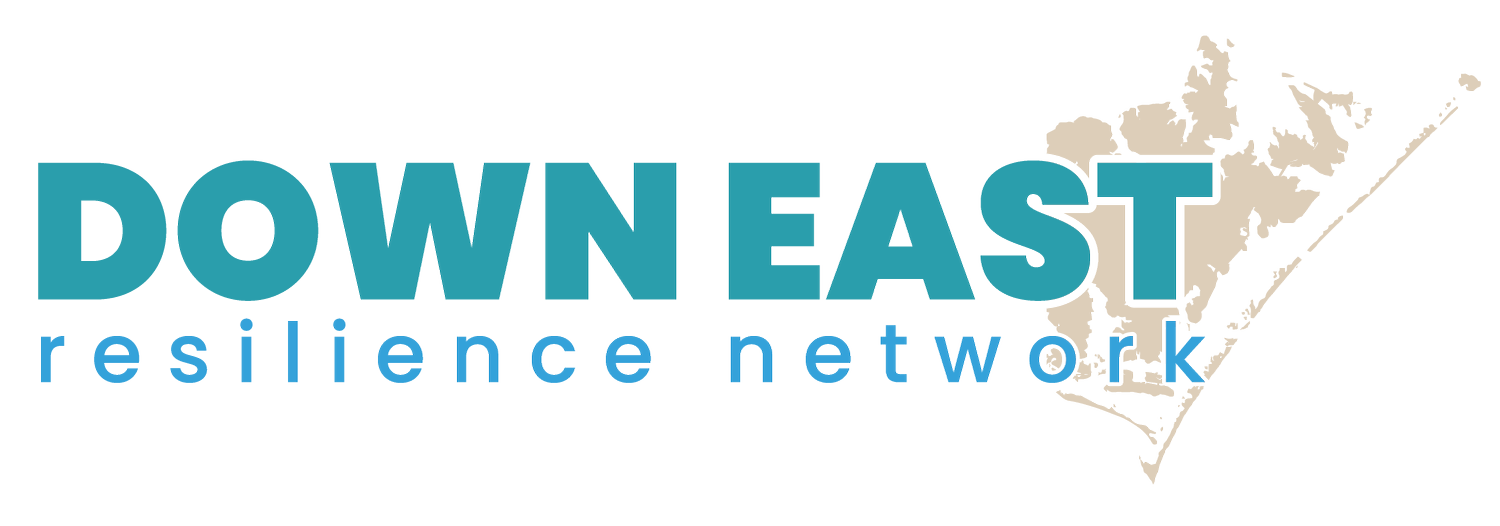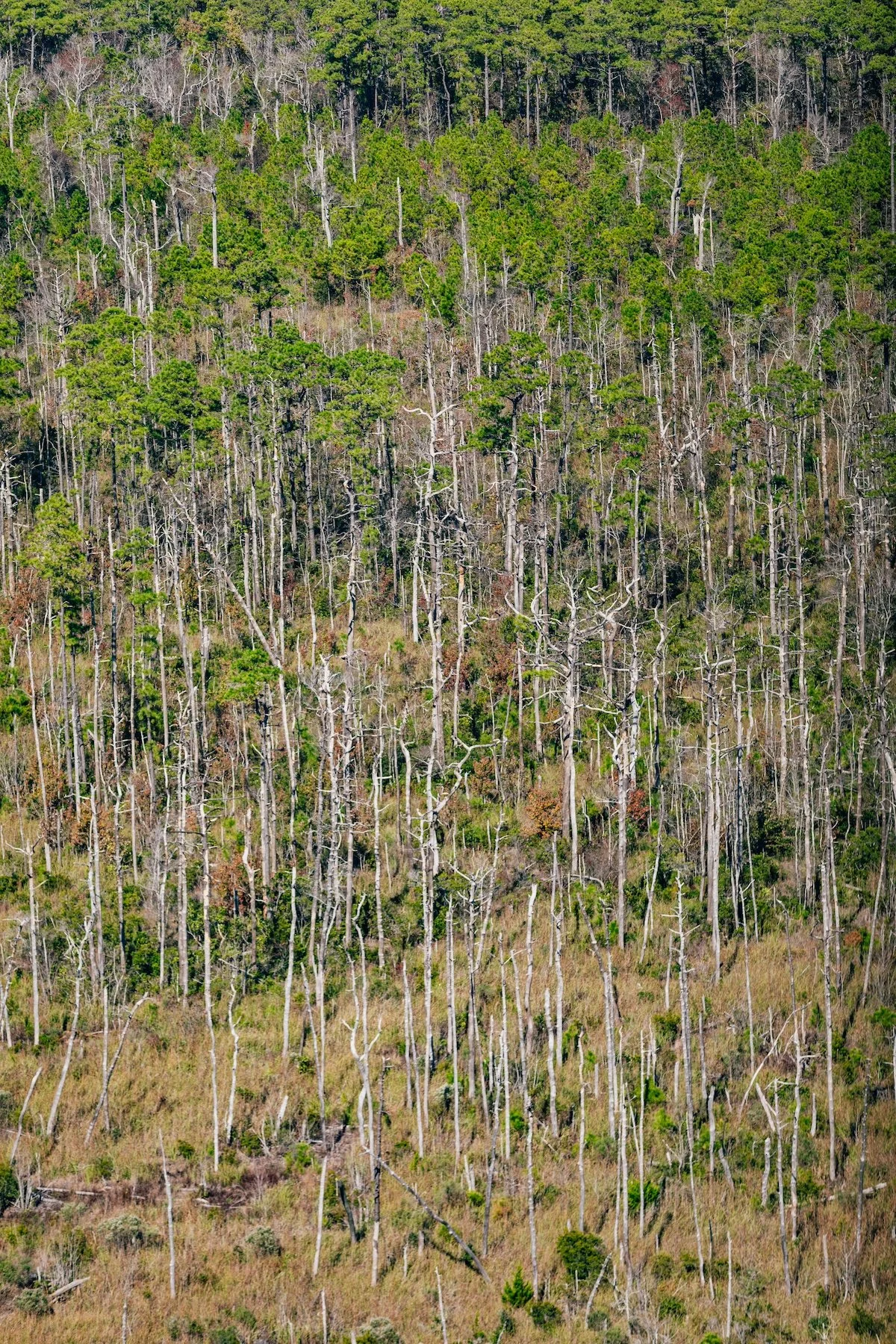Saltwater Intrusion
Saltwater intrusion happens when saltwater moves inland into freshwater sources, like underground aquifers, because of rising seas and extreme weather, such as hurricanes and storm surges.
As sea level rises, saltwater pushes into low-lying areas, contaminating freshwater supplies that people, plants, and animals rely on. Increased groundwater extraction can also allow saltwater to replace freshwater in these sources.
WHAT ARE THE IMPACTS OF SALTWATER INTRUSION?
-
One visible sign of saltwater intrusion is the spread of ghost forests (as shown in the photograph at the top of the page).
These areas were once healthy coastal forests that supported a variety of plant and animal life, helped filter water, stored carbon, and protected inland areas from storms.
As saltwater moves in, the trees can no longer survive, leaving behind stands of dead, gray trunks and stumps.
This shift not only changes the landscape, it leads to the loss of important habitat for wildlife and reduces the benefits these forests once provided.
As saltwater intrusion becomes more common, ghost forests are transitioning into salt marshes.
-
Saltwater can also damage infrastructure:
When saltwater reaches underground pipes, it can lead to corrosion and increase maintenance needs for wastewater and drinking water systems.
Over time, this can strain local utilities and lead to service disruptions. It can also create problems for homeowners who rely on private wells and septic systems.
Saltwater intrusion can also weaken roads, bridges, and culverts. Salt accelerates the breakdown of materials like concrete and metal, leading to faster wear and more frequent repair needs.
In areas already dealing with frequent flooding, saltwater exposure adds another layer of stress on critical infrastructure.
-
When saltwater moves into agricultural lands, it can reduce crop yields and damage the soil.
Salt in the soil makes it harder for plants to absorb water and nutrients, weakening crops or preventing them from growing altogether.
Over time, repeated salt exposure can degrade soil quality, making the land less productive and, in some cases, no longer suitable for farming.
A Project to Support Preparing for Saltwater Intrusion
The Saltwater Intrusion and Sea Level Rise (SWISLR) Research Coordinating Network aims to prepare rural communities along the Atlantic and Gulf Coasts for the effects of saltwater intrusion and sea level rise. This network allows researchers across the United States to discuss similarities and differences in research findings in different communities. There is ongoing research and potential projects Down East affiliated with the larger SWISLR network.
A newsletter (sign up at www.swislr.org) and SWISLR RCN Facebook group are ways to stay up-to-date and connect with the SWISLR group.



